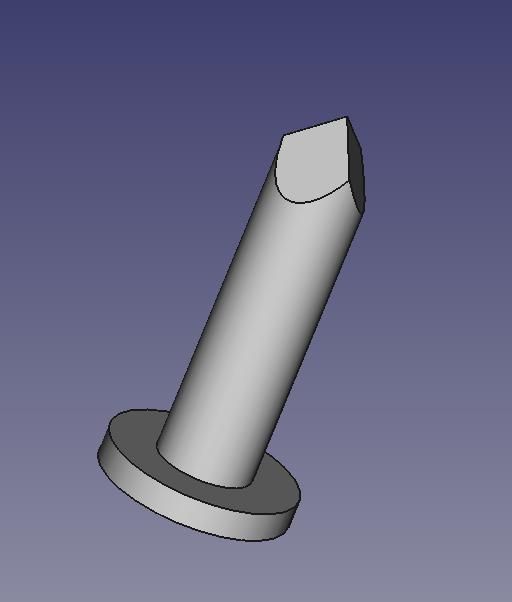I was never a draughtsman professionally but did take GCE A-Level Technical Drawing, and Interpenetrations of which I think that tack would be an example, were one of the topics covered.
It was not the most difficult topic though – I award that prize to something called "Lines in Space". Indeed, our teacher warned us if we didn't grasp the principles from the start we would be very unlikely to learn it! Despite sounding like an early Pink Floyd track, this method plots the shortest line between two lines crossing one above the other in a 3D space. It is fairly easy to visualise a solid, 3D object shown on a 2D sheet – until you venture into such realms as the innards of a Burrell compound cylinder casting, perhaps – but a line from one (x,y,z) to another (x,y,z) is a pretty nebulous entity. Now add another equally arbitrary 3D-sloping line, then try to imagine where they are at their closest, and how to draw them to establish that link accurately….
I have no idea if CAD could give you the answer. Even if you knew the 4 co-ordinate trios the link-line would be fiendishly difficult to calculate mathematically, if possible at all. I have an idea too, we did not actually have the lines' start and end co-ordinates, but I forget how they were described. You'd need a third line and all crossing at a single point to use simultaneous equations with 3 unknowns, which is difficult and laborious algebra – here we start with only 2 lines unsociably distanced!
'
I don't think the industrial draughts-people many years back would necessarily have had to erase all the construction lines though, because the workshop prints were taken off ink tracings of the pencil drawings. ("Tracer" was our Mam's occupation, in fact!) That erasing would have been necessary in later years when drawing straight onto draughting-film (tracing-paper with a posh name). I worked as materials-cutter for several years for a printing-machine manufacturer, not long before CAD started to develop professionally, and all the original drawings there were on tracing-paper from which the shop prints used by the machinists and I, were photo-copied.
Alyn Foundry.























![20200721_170707[1].jpg 20200721_170707[1].jpg](/wp-content/uploads/sites/4/images/member_albums/44290/871467.jpg)


